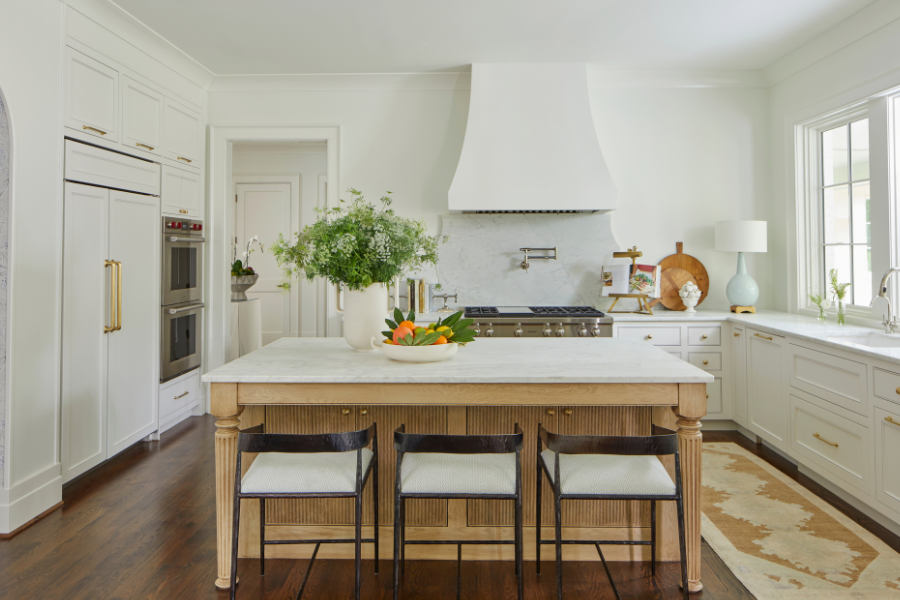Are you house hunting or even looking to renovate or redesign a home? There are two popular floor plans across the country: closed concept and open concept. This might seem small, but there are some significant differences. Closed concept floor plans designate each area of the house as its own separate space, separated by walls. With an open-concept floor plan, there are no walls between each space, creating one large space where different areas coexist. If you choose an open-concept floor plan, the two main rooms to pay close attention to are the kitchen and dining room. Kate Hartman Interiors in Denver can give you ideas and help design the perfect open concept Kitchen and Dining room that will add sophistication to your home.
Open Concept Kitchen and Dining Room Ideas
Kate Hartman, an interior designer in Denver, can help when choosing an open-concept kitchen and dining room; there are some definite advantages. This layout allows you to maximize space in your home and helps create a bright and inviting space that a closed concept doesn’t allow for. When adding the right architectural details, color schemes, and furniture details, your open-concept kitchen and dining room will stun you and your guests.
Color Schemes
When designing an open-concept kitchen and dining room, one of the safest things you can do is go with a monochromatic color scheme. In interior design, a monochromatic color scheme is choosing one single color as the foundation of the room and, from there, having other shades similar to that color accent the primary color. You can’t go wrong with this color scheme, especially with neutral colors. That will create such a classic, sophisticated look for the rooms. This type of color scheme still allows for many different options. Just because you are using one base color doesn’t mean you can’t add texture. The use of patterns with this type of color scheme creates texture. Texture elevates the design quality of these rooms in your house. You can use bold, bright colors or keep it simple and classic with neutrals. Another color tip is that you can paint all the trim the same color. This will create cohesiveness among the rooms, even though each area is its own space.
Architecture
Even though an open concept means no walls separate the different areas, you can use other architectural structures to create breaks in the space. Options to consider are:
1. Wainscotting
2. Different Moldings
3. Paneling
Wainscotting could be used to help differentiate one area from the other. You could use wainscotting in your open-concept dining room to make it stand out and show that it is its own space. The use of different moldings or panelings also creates these breaks. You can even pick certain corners to add something special to help make that break.
Furniture
You can use furniture to your advantage in an open-concept kitchen and dining room. Move furniture away from the walls in the dining room and create a seating arrangement or a conversational area. In an open-concept kitchen, you can achieve the same idea with a table and use rugs to break up space. You can also use rugs in the dining room while adding bookcases and other types of shelving to take up wall space, thus creating more depth in these rooms.
Benefits of an Open Floor Plan
For those looking to expand the central hub of their home and increase togetherness, an open-concept plan is the way to go. Many advantages come with an open concept, such as maximizing the space in your home and, of course, increasing socialization. An open-concept plan also allows for more multitasking opportunities because you can access multiple rooms in an open space. Lastly, an open concept simply provides for a brighter space. Walls can easily block light from a room.
Contact Kate Hartman
If you want to transform your kitchen and dining room, let Kate Hartman Interiors in Denver help you take your open-concept space to the next level of sophistication.

